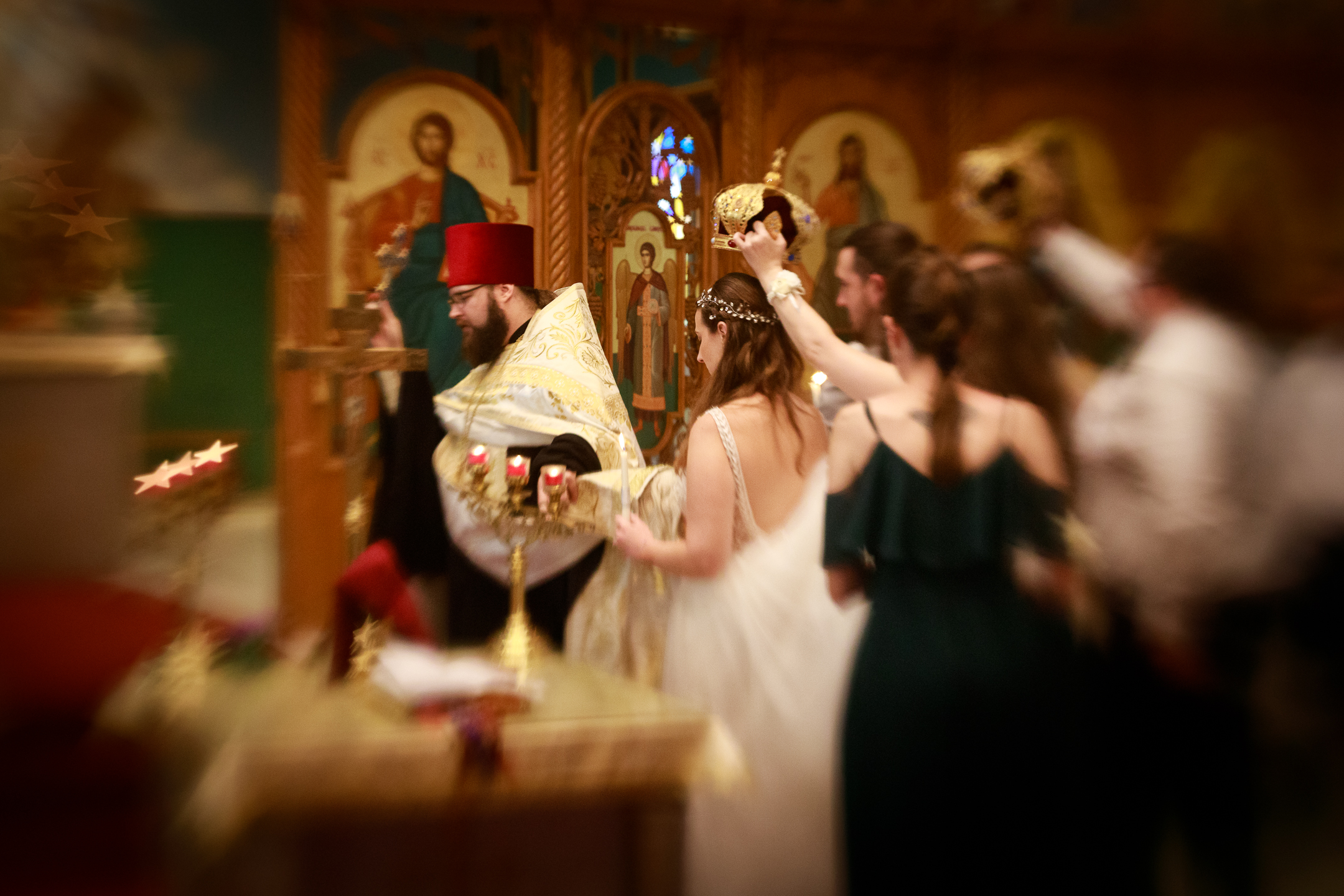I was away in Ohio, visiting my daughter, her husband, and children. She had just come home from the hospital with her latest child, Frederick. A lot has been going on since I posted last.
I brought my Canon R camera and the Lensbaby Spark lens to the wedding of Seth Syfrett and Katie Breckenridge at Holy Cross Greek Orthodox Church on September 21, 2024. I was not the official photographer, but I am a rather compulsive one, and I shot everything that caught my eye. The Spark is a variable-focus lens that you control with your fingers over its front, twisting and pulling back on it to put the focus where you want. Outside the focused area, the lens produces blur. This gives the photographer greater creative control, beyond framing and composition.

I took jazz guitar lessons briefly, and my instructor pointed out something that would never have occurred to me. The dominant-seventh chord is made up of the first, the third, the fifth, and the “flattened seventh” in the scale. You don’t have to play the third, however, because if you play the first, fifth, and flattened seventh, people listening will think that they hear the third!
If you play the first, fifth, and flattened seventh notes in the dominant-seventh chord, people listening will think that they hear the third.
How is this relevant to photography? For decades, camera-makers have been improving the resolution of the digital cameras, so that they approach or surpass that of film cameras. (To have the same level of detail as silver halide film cameras, I understand, digital cameras would have to capture 90 megapixels of data.) As they become better at setting exposure and focusing, less is left to the photographer. Sharp images with little or no noise (at least with enough light) are the norm.
A photographer-friend a few years ago pointed out that most people viewing an image don’t notice softness, or a lack of sharpness (proper focus) the way photographers do. They notice the expressions on peoples’ faces, and so forth. What happens when the low level of light challenges the camera’s ability to register the data, and you get digital “noise”? Photographers generally disapprove, but non-professionals don’t notice. The camera “interpolates” data, estimating what the color and tone should be where it can’t accurately record it. The newer the camera, the better the algorithms, and the better they are at this. Interpolation simplifies the image, as detail is lost, but the relative smoothness of the image makes body language, gesture, and expression more expressive. Color becomes more intense without an increase of saturation in post-processing. Surprisingly, removing noise (or grain in film images) in post-processing can make the images seem less sharp. Just as no one notices the missing third from the dominant-seventh chord, so most people (who are not specialists) do not notice missing detail when the cameras interpolate data.
The relative smoothness of the image makes body language, gesture, and facial expression even more expressive



Photographers could be divided into two groups. There are the ones who are technical specialists, and judge any photo first in terms of proper focus or sharpness, shutter speed, and exposure. And then there those who are most interested in the “artistic” side of photography — which often means playing with all of the above (focus, shutter speed, exposure), as well as framing and composition. I have to admit that, while I care about the technical aspects of any image, I am more on the artistic side of things here. Photographers of an artistic bent are getting bored by the race to have the most pixels, the sharpest lenses, the best autofocus, or even the best color. (Canon wins in the color department, from what I understand; I shoot Canon.) So if you look on Instagram, a lot of the “artistic” photography obscures the subject, or under-exposes the image, or involves a slow shutter speed and blur. They are looking at classic film lenses, or experimental lenses like those from Lensbaby, to see how to make images that are different, and somehow moving. (Lensbaby lenses, or their equivalent, are used for television shows like Dateline, and for movies. I have six Lensbaby lenses; the Spark is the most challenging, but when it works, it is the most pleasing in its effects.)
Stay tuned for more Lensbaby images in future!

